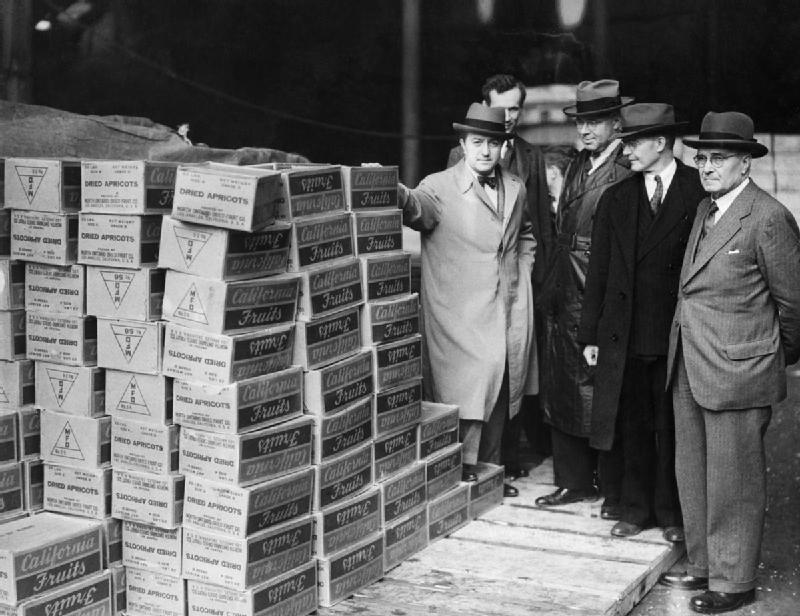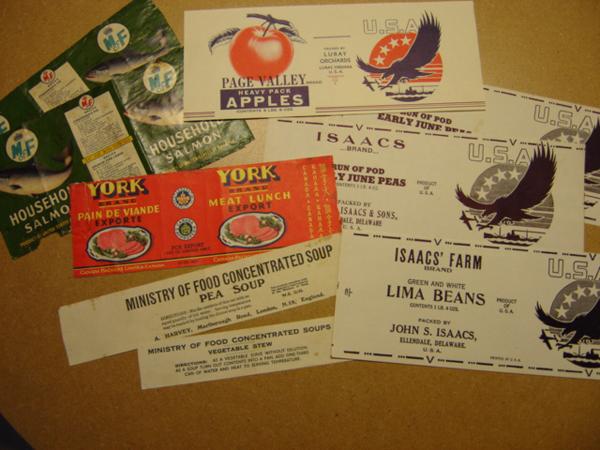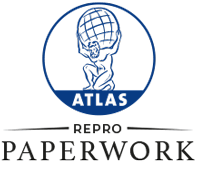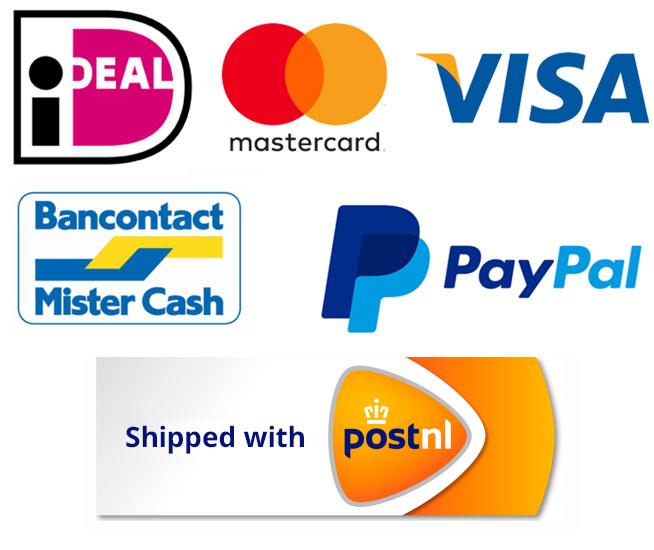Years ago I bought labels similar to this one and I always thought they were American labels, used by the American Homefront and Army. But later I found out that they were for food products of the Lend Lease Act of 1941.

Lend-Lease Act
As Germany marched across western Europe in 1940, President Franklin D. Roosevelt struggled to find a way to help the countries fighting the Axis –but he faced significant obstacles. The United States military was opposed to sending arms to Great Britain, fearing that the U.S. might need them to defend the Western Hemisphere from Adolf Hitler. Further, U.S. law prohibited the president from extending credit to countries–including Great Britain–that had not repaid loans made during World War I. The law also restricted the purchase of U.S. war matériel by belligerents, allowing it only on a “cash and carry” basis. And, after World War I, the American public did not want to be involved in another European war.
In December 1940, after Prime Minister Winston Churchill informed Roosevelt that Great Britain could not pay for supplies, the president crafted a new initiative. The U.S. would “lend” Great Britain materiel and Britain would repay the United States through various means to be determined later. This program, known as Lend-Lease, became law on March 11, 1941.
The Lend-Lease act allowed the U.S. to manufacture and transfer (by loan, lease, or sale) items needed for national defense, particularly aircraft, tanks, ships, trucks, jeeps, munitions, fuel, food, and services, to countries whose defense was crucial to the United States. Until the United States was strong enough to enter the war, Roosevelt planned to use Lend-Lease to aid Great Britain, China, and the Soviet Union, but he also used the program to benefit his country and the Allied war effort in other ways. For example, in exchange for a $200 million Lend-Lease agreement, Brazil, a key base for German spies, allowed the U.S. to establish a radio monitoring unit on its soil. In 1942, Brazil also arrested over 80 Axis spies in the first roundup of German intelligence agents in Latin America. Eventually, more than forty nations that actively helped U.S. war efforts participated in the program.
Three main routes were developed to get Lend-Lease matériel to the allies of the United States:

The North Atlantic – Even before the U.S. entered the war, Roosevelt used Navy convoys to protect Lend-Lease shipments crossing the North Atlantic to Great Britain or the Soviet Union. Many American seamen lost their lives to German U-boats on this particularly perilous route.
The Persian Corridor – About seventy percent of the aid reached the Soviet Union via this route through Iran.
The Pacific – Some matériel traveled by ship across the Pacific to Vladivostok in eastern Russia, while thousands of aircraft were flown from Alaska to Siberia by Soviet and American pilots. Of the 15,000 airplanes delivered to the Soviets, half were flown in from Alaska.

Food comes to Britain:
American Lend-Lease Food arrives in the U.K., 1941. Lloyd Steer (left), Paul Appleby (U.S. under secretary of agriculture), and Rudolph Evans (U.S. administrator of agricultural adjustment administration) examine boxes of dried apricots on the quayside, somewhere in Britain. © IWM (V 13), Ministry of Food official photographer
The Lend-Lease program was stunningly successful in getting much-needed supplies to the Allies and keeping them in the war. In 1941 alone, more than 1,000,000 tons of food were shipped overseas. Great Britain received almost $700,000,000 worth of goods including munitions, raw materials, tools, fire-fighting equipment, food, vitamins for children, medical supplies, and tractors in just the first three months of 1943. From 1942 to September 1945, the Soviet Union received 9,000 tanks or self-propelled guns, 362,000 trucks, 47,000 jeeps, 131,633 submachine guns, 3,000 rocket launchers, 14,000,000 boots, 532,000 tons of U.S. sugar, 485,000 tons of canned meat (i.e., Spam) and hundreds of other items. Twenty percent of the Lend-Lease supplies the Soviets received were military, while the rest were food, metals, chemicals, petroleum products, and factory machinery.
In all, from March 1941 to July 1946, the program cost the United States almost $51 billion, with the majority going to the British Empire ($31 billion), the Soviet Union ($11 billion), Free France and its possessions ($3.2 billion), China ($1.5 billion), and Brazil ($322 million). The U.S. also received billions of dollars worth of goods through reverse lend-lease, including several hundred million dollars’ worth of food and supplies from Australia and New Zealand for American troops.
The Department of Agriculture Lend Lease insignia

Disney shows Lend-Lease Insignia
“An Identification Mark For United States Food. Walt Disney (right) presents to Secretary of Agriculture Claude R. Wickard, an emblem he designed for use on the labels and markings of containers to identify anywhere in the world the food they hold. In this emblem, the United States Eagle protects a convoy from an Axis bomber and four stars symbolize the four freedoms – of expression, of religion, from fear, from want.”
In December 1941, Disney artist Hank Porter designed an emblem for the Department of Agriculture. A January 28, 1942 press release issued by the Federal government read in part:
“The American eagle, poised on guard above a cargo ship is the design…which will be available to identify U.S. food products wherever they are sent throughout the world.
The emblem was presented to Secretary Claude R. Wickard…in recognition of the vital part U.S. food is playing on both the home and foreign war fronts of the world. The new emblem, which will be available for voluntary use by packers, is expected to become a familiar part of the labels for food containers.
The detail of the emblem…shows an American eagle poised protectively over a cargo boat, fending off a bombing plane. Stars representing the four freedoms are above the eagle…the four freedoms pledged in the Atlantic Charter and later by the United Nations are freedom of speech and expression, freedom of every person to worship God in his own way, freedom from want, and freedom from fear.”
Walt’s brother Roy suggested the eagle be used on the emblem. The insignia was printed i.e.: on canned lima beans and green peas labels. The design also found its way onto an apple label and was incorporated by three dairies onto two different sized milk bottles. The reverse of the bottles pictures the letter “V” for victory, as well as the dot, dot, dot, dash Morse code symbols, also signifying the letter “V.” Furthermore on Dried Eggs boxes, canned fish etc…

Not Available in the Shop?
Custom Orders
If you want something that is not available in the webshop, or if you have original piece of paperwork that you would like to have reproduced, or you want some paper props made for your next movie production, please get in touch me. Then I can see if I can make it for you.


